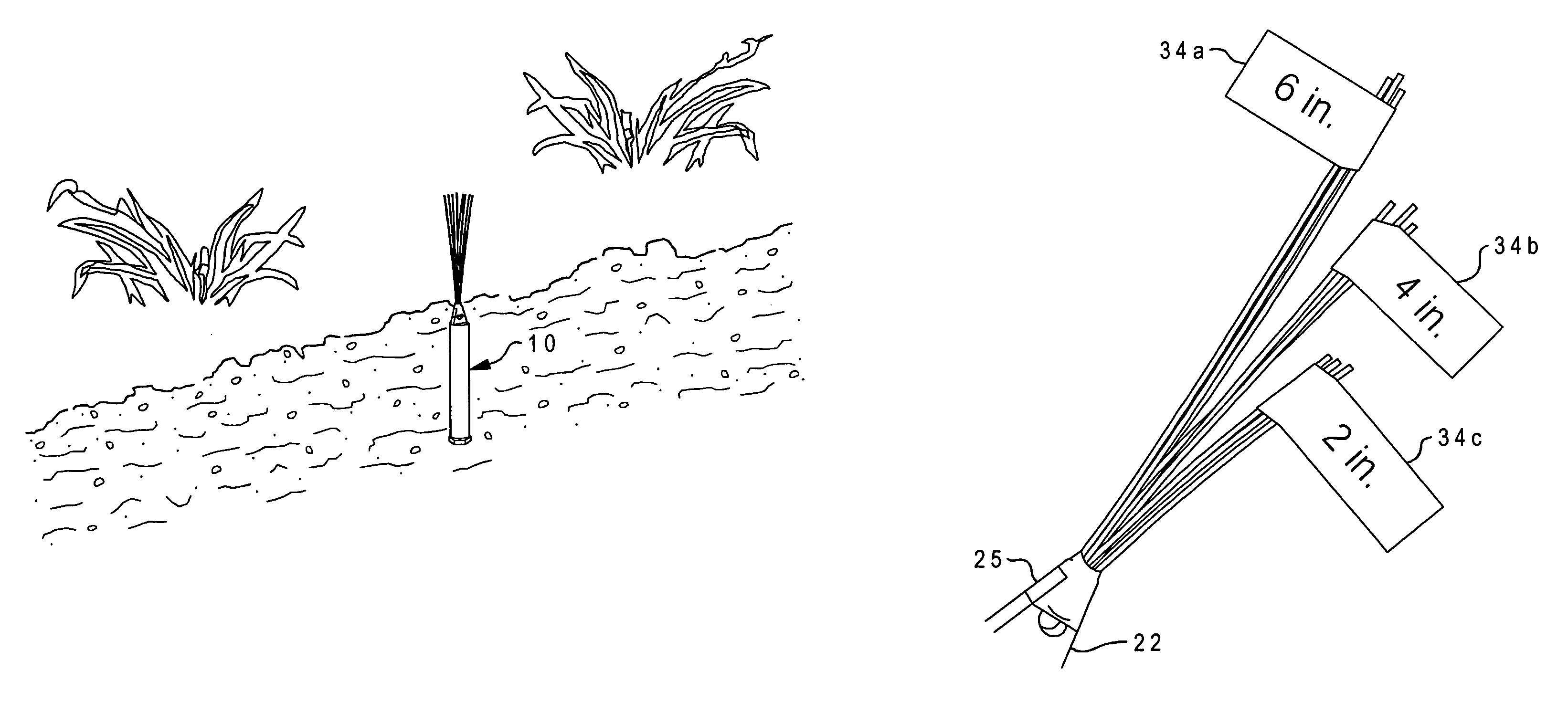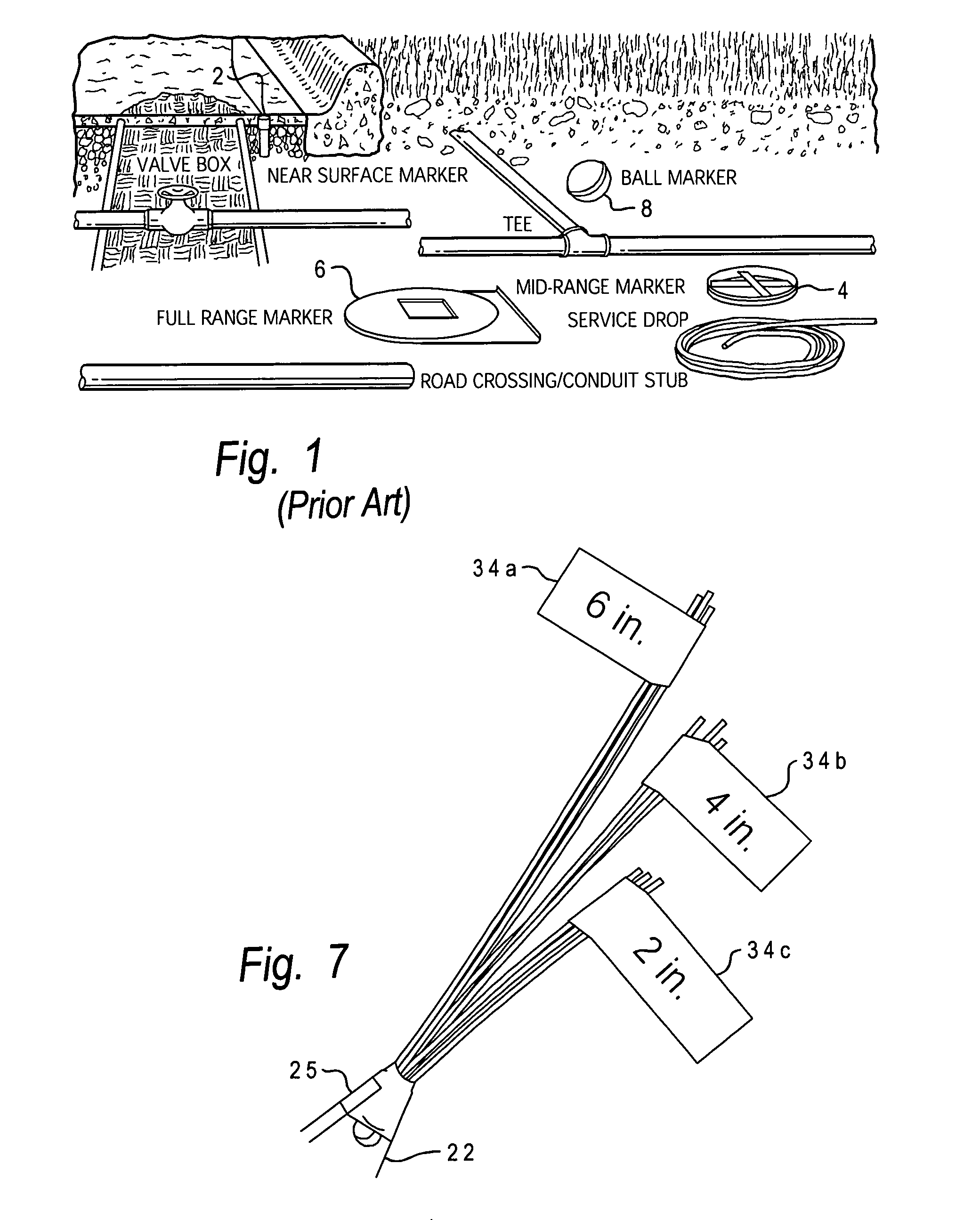Surface tracker
a tracker and surface technology, applied in the field of surface trackers, can solve the problems of inconductivity of most conduits, and inability to detect any surface instrumentation, and achieve the effects of long-term locatability, superior locating capability, and resistance to wear and tear and the elements
- Summary
- Abstract
- Description
- Claims
- Application Information
AI Technical Summary
Benefits of technology
Problems solved by technology
Method used
Image
Examples
Embodiment Construction
)
[0028] With reference now to the figures, and in particular with reference to FIGS. 2-4, there is depicted one embodiment 10 of a surface tracker constructed in accordance with the present invention. Surface tracker 10 is generally comprised of a marker body 12 and a visual indicator 14. In this embodiment, marker body 12 has a generally cylindrical (tubular) casing, and houses a passive electronic marker as discussed further below. A cap 16 at the lower end of marker body 12 is used to seal the end opening that receives the interior passive electronic marker. End cap 16 may optionally have a pointed (conical) protrusion 18 to facilitate the insertion of marker body 12 into the ground. End cap 16 may take the form of a screw plug having threads which mate with matching threads along the interior wall of marker body 12. Marker body 12 and end cap 16 may be formed of any durable material, particularly a moldable polymer such as polyethylene. Marker body 12 may be constructed using in...
PUM
 Login to View More
Login to View More Abstract
Description
Claims
Application Information
 Login to View More
Login to View More - R&D
- Intellectual Property
- Life Sciences
- Materials
- Tech Scout
- Unparalleled Data Quality
- Higher Quality Content
- 60% Fewer Hallucinations
Browse by: Latest US Patents, China's latest patents, Technical Efficacy Thesaurus, Application Domain, Technology Topic, Popular Technical Reports.
© 2025 PatSnap. All rights reserved.Legal|Privacy policy|Modern Slavery Act Transparency Statement|Sitemap|About US| Contact US: help@patsnap.com



